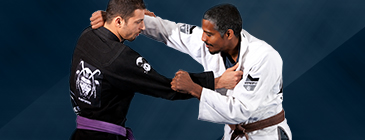It’s interesting how words become commonplace in the English language. Grow up around the word cul-de-sac and you never question why it’s called that. (It’s French for “bottom of the bag,” by the way.)
The same goes for many of the martial arts disciplines that are out there. The first time you see the words jiu jitsu on the window of a strip mall, you might think them funny. But after a while the words are just part of the vocabulary…even if you don’t know the origin or what they mean.
We thought it might be fun to go through the most common types of martial arts that you might happen upon and let you know what they mean. Get ready for your foreign language lesson!
Judo
Developed in Japan about 140 years ago, Judo is a practice that incorporates mental discipline as well as the physical martial art. Judo has no striking, and because of this it is translated as gentle way.
Jiu Jitsu
Jiu jitsu has multiple spellings and variants of the capitalizations and hyphens. It can be jiujitsu, jiu-jitsu, ju-jitsu, and Jiu Jutsu. It’s kind of a tough one to pin down an exact meaning for, as there can be multiple translations of the original Japanese words. Much like judo, the ju part can mean gentle; but also flexible, pliable, or yielding. The jutsu part of the word means either technique or art, with the art of Jiu Jitsu being turning an opponent’s own force against them. Since jiu-jitsu can be used as a backup after weapons are broken in a battle, the idea of it being a gentle art makes sense (since you’re no longer stabbing people!).
Brazilian Jiu Jitsu
Adding the word “Brazilian” to jiu-jitsu doesn’t change the meaning of those words, of course. But it does let you know that this is the Brazilian version of the martial art that has diverged from the Kodokan rules.
Muay Thai
This one starts hard and then gets easier. Many believe that Muay comes from the word mavya, a word that means “to make things united” in Sanskrit. The united aspect probably refers to the bringing together of the four elements that are associated with the head, biceps, fists, and spirit. (The legs are added later, we guess.) That makes a lot of sense, considering that all of the limbs are brought together in Muay Thai; it’s often called “the art of eight limbs.”
The Thai part is a lot easier. It comes from Thailand. Nailed it!
Karate
A striking martial art from China, karate has one of the most well-known origins thanks to its prominence in martial arts movies. Karate breaks down into kara (empty) and te (hand): therefore it means empty hand, meaning that it focuses on not using weapons.
Well, that was fun! So fun, in fact, that we might be back next time to let you know where the names of other popular martial arts come from. Until then, click here to learn the martial art itself!








